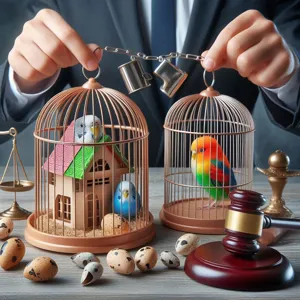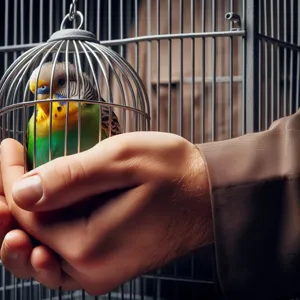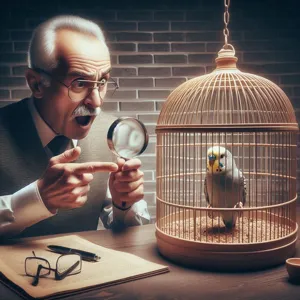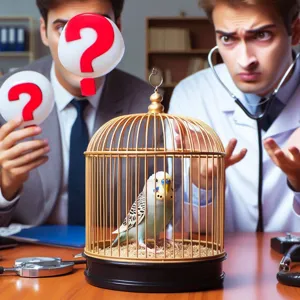When it comes to keeping your small dog happy and entertained, the right toys can make all the difference.
Small dogs, with their boundless energy and playful spirits, thrive on interactive play and mental stimulation. However, not all toys are created equal, and finding the perfect ones that cater to their unique needs can be a challenge. In this blog post, we’ll explore the top 10 must-have toys that promise to elevate your furry friend’s playtime to new heights. From engaging chew toys and plush companions to puzzle games that challenge their intellect, these selections are designed to provide hours of fun while promoting healthy habits. Join us as we dive into the world of canine entertainment, ensuring your small dog enjoys an ultimate play experience that keeps their tail wagging and their spirits high!
1. Understanding Your Small Dog’s Play Needs

Before diving into the exciting world of toys for your small dog, it’s essential to first understand their unique play needs. Small dogs, often bursting with energy and curiosity, benefit from toys that cater to their size, personality, and play style. Unlike larger breeds, small dogs may prefer toys that are lightweight and easy to manipulate, yet still provide ample stimulation.
Consider the energy levels and temperament of your furry friend. Is your small dog a playful, high-energy pup that thrives on interactive toys? Or is he more of a relaxed companion who enjoys cuddling with plush toys? Understanding these nuances will guide you in selecting the right toys that will keep your dog engaged and entertained.
Additionally, small dogs often have delicate mouths and teeth, making it crucial to choose toys designed specifically for their size and strength. Durable chew toys can help satisfy their natural urge to gnaw, while soft toys can provide comfort during naptime.
Moreover, keep in mind that many small dog breeds are known for their intelligence and curiosity. Puzzle toys that challenge their minds can provide hours of entertainment and prevent boredom, which can lead to destructive behaviors. Investing time to assess your small dog’s play needs will ensure that you select toys that not only entertain but also promote physical activity and mental stimulation. As we explore the top must-have toys, remember that the right playtime companions will enrich your dog’s life and deepen the bond you share.
2. Safety Considerations for Dog Toys
When selecting toys for your small dog, safety should always be your top priority. The joy of playtime can quickly turn into a nightmare if you choose toys that aren’t designed with your pet’s well-being in mind. First and foremost, consider the material. Opt for toys made from non-toxic, durable materials that can withstand the enthusiastic chewing of a small dog. Look for toys that are specifically labeled as pet-safe, as some materials can break down and pose choking hazards.
Size matters, too! A toy that’s too small can easily be swallowed or lodged in your dog’s throat, while a toy that’s too large may be difficult for them to handle. Always select toys that are appropriately sized for your dog’s breed and chewing strength—anything that fits comfortably in their mouth is a good rule of thumb.
Additionally, keep an eye out for small parts that could become detached and create choking hazards. Toys with squeakers, for instance, can be enticing but may also pose a risk if the squeaker becomes loose. Regularly inspect your dog’s toys for signs of wear and tear, such as fraying edges or cracks, and replace them when necessary to prevent any potential accidents.
Finally, consider your dog’s play style. Some small dogs are gentle nibblers, while others have a more vigorous play approach. Tailoring your toy selection to match their behavior can help ensure safe and enjoyable playtime. By prioritizing safety in your toy choices, you can create a fun and secure environment for your furry friend, allowing them to frolic and play without worry!
3. Interactive Toys: Engaging Your Pup’s Mind

When it comes to keeping your small dog entertained, interactive toys are an absolute game changer. These clever creations do more than just provide physical stimulation; they challenge your pup’s intellect and curiosity, transforming playtime into an enriching experience. Consider toys that require your dog to solve puzzles to access treats or toys that respond to their actions, creating a dynamic and engaging environment.
For instance, treat-dispensing puzzles require your furry friend to think critically as they nudge, paw, and roll the toy to release delicious rewards. This not only keeps them occupied but also helps to reduce boredom-related behaviors, such as excessive barking or chewing. Brands like Nina Ottosson and Outward Hound offer a range of difficulty levels, ensuring that there’s always a new challenge ready for your pup as they master each toy.
Additionally, interactive toys often feature sounds, lights, or moving parts that capture your dog’s attention and encourage active play. Think of plush toys that squeak when bitten or electronic gadgets that dart around the room, enticing your dog to chase. These toys provide mental stimulation and promote physical exercise, which is crucial for the overall health of small breeds.
Incorporating interactive toys into your dog’s playtime routine can also foster bonding moments. Spend time with your pup as they explore and figure out these toys, offering praise and encouragement along the way. This shared experience not only strengthens your connection but also helps your dog feel more secure and happy.
In summary, interactive toys are essential for nurturing your small dog’s mind and spirit. They offer a perfect mix of fun and challenge, ensuring your furry friend stays engaged and entertained for hours on end. So, if you want to elevate your dog’s playtime and keep their tail wagging, adding a few interactive toys to their collection is a must!
4. Chew Toys: Durable Options for Small Dogs
When it comes to the happiness and health of your small dog, chew toys are an absolute essential. These toys not only provide endless entertainment but also promote dental health by helping to clean teeth and massage gums as your furry friend gnaws away. However, not all chew toys are created equal, especially for our pint-sized pals.
Look for durable options specifically designed for small breeds. Brands that focus on quality materials ensure that their toys can withstand the vigorous chewing habits of small dogs, without breaking apart into hazardous pieces. Rubber chew toys are a fantastic choice, offering a satisfying texture that can withstand even the most enthusiastic chomping. Many of these toys come in fun shapes and sizes, making playtime a delightful experience.
Additionally, consider toys infused with flavors, like peanut butter or bacon, to keep your dog engaged for longer periods. These tasty options can stimulate their senses and encourage them to chew, which is not only entertaining but also a natural stress reliever.
Interactive chew toys, such as those with pockets for treats, can elevate the experience even further, turning chewing into a rewarding game. These toys not only keep your small dog occupied but also help to mentally stimulate them, which is just as important as physical exercise.
When selecting chew toys, always ensure they are appropriately sized for your dog. A toy that’s too large can be awkward for small dogs to handle, while one that’s too small may pose a choking hazard. By providing your furry companion with the right durable chew toys, you’re setting the stage for countless hours of fun, all while promoting their health and well-being.
5. Plush Toys: Comfort and Cuddles

Plush toys are more than just a source of entertainment for your small dog; they offer a comforting presence that can soothe anxiety and provide companionship. Soft, cuddly, and often adorned with squeakers, these toys come in a variety of shapes, sizes, and textures, making them irresistible to your furry friend.
Imagine your little pup snuggling up with a fluffy teddy bear or a plush elephant after a long day of play. The gentle feel of the fabric against their skin not only provides tactile pleasure but also gives them a sense of security, much like a beloved childhood blanket. Many small dogs naturally gravitate towards these soft toys, using them as chew toys or even as makeshift pillows during nap time.
When choosing plush toys, look for those that are specifically designed for small breeds—these are often made with durable materials to withstand vigorous chewing while still being gentle on your dog’s teeth and gums. Some plush toys even come with reinforced seams to enhance their longevity, ensuring that your investment holds up against the playful antics of your pet.
Additionally, consider selecting toys that are machine washable. Small dogs can sometimes have a penchant for getting their toys a bit messy, whether from a playful romp in the yard or a cozy cuddle session on the couch. A washable plush toy makes it easy to maintain hygiene without sacrificing comfort.
Incorporating plush toys into your small dog’s playtime can enhance their overall well-being. These comforting companions offer not just fun but also promote emotional health, making them a must-have in your dog’s toy collection. So, if you want to provide your pup with both joy and comfort, don’t forget to add a plush toy to their lineup!
6. Fetch Toys: Perfect for Active Playtime
Fetch toys are a quintessential addition to any small dog’s playtime arsenal, providing a delightful way to engage your furry friend in active play. These toys are designed to be lightweight and easy to throw, making them ideal for small breeds that love to chase and retrieve. Whether you’re at the park, in your backyard, or even indoors, fetch toys can turn any space into a lively playground.
Look for options that are brightly colored and made from durable, non-toxic materials to withstand those enthusiastic bites and tugs. Many fetch toys are also designed to float, allowing you to take the fun to the water during warmer months—perfect for small dogs that are natural swimmers.
Consider toys that emit sounds or have squeakers inside; this auditory stimulation can heighten your dog’s excitement and keep them engaged during a game of fetch. Additionally, some fetch toys have unique shapes or textures that encourage your dog to explore and interact, adding an extra layer of fun.
To make fetch even more exciting, you can incorporate variety into the game by alternating different types of fetch toys. Consider plush balls, frisbees, or even rubber bones designed for fetching. This not only keeps playtime fresh but also helps to strengthen the bond between you and your pup, as you cheer them on during their spirited pursuit of their favorite toy. With the right fetch toys in your small dog’s collection, you’ll provide countless hours of joy, exercise, and mental stimulation, promoting a healthy and happy lifestyle.
7. Puzzle Toys: Keeping Boredom at Bay

Puzzle toys are a fantastic way to keep your small dog mentally stimulated while providing hours of engaging fun. These cleverly designed toys challenge your furry friend to think critically and problem-solve, making playtime both entertaining and rewarding. They come in various shapes and sizes, often featuring hidden compartments where you can conceal treats or kibble, encouraging your pup to work for their rewards.
Imagine your small dog nudging, pawing, and sniffing around, determined to unlock the hidden goodies within the toy. This not only keeps them occupied but also helps reduce boredom-related behaviors, such as excessive barking or destructive chewing. Puzzle toys cater to your dog’s natural instincts, promoting healthy mental exercise and preventing the onset of anxiety.
When selecting a puzzle toy, consider your small dog’s skill level and temperament. Some toys offer adjustable difficulty levels, allowing you to increase the challenge as your pup becomes more adept. Look for durable materials that can withstand enthusiastic play, ensuring that your investment lasts through many fun sessions.
Whether it’s a treat-dispensing ball, a sliding puzzle, or a multi-chambered maze, adding a puzzle toy to your small dog’s playtime routine is a surefire way to keep their minds sharp and their tails wagging. With these engaging toys in their arsenal, your small dog will be entertained for hours while you enjoy peace of mind knowing they’re happily occupied!
8. Tug Toys: Strengthening Bonds with Play
Tug toys are more than just a source of entertainment; they are a fantastic way to strengthen the bond between you and your small dog while providing an outlet for their natural instincts. The thrill of a good tug-of-war game ignites excitement and engagement, turning playtime into a shared adventure. These toys come in various forms—ropes, soft plush figures, or even durable rubber shapes—that are designed to withstand the enthusiastic pulling and tugging of your feisty little companion.
When you introduce a tug toy into your dog’s play routine, you not only stimulate their physical energy but also promote mental engagement. The interactive nature of tugging encourages your dog to think strategically, as they learn to pull, release, and maneuver around you during the game. This back-and-forth play can help burn off excess energy, making it an ideal solution for small dogs who may have a tendency to bounce off the walls!
Additionally, tug toys are perfect for reinforcing training and commands. You can use them to teach your dog to “take it” or “drop it,” fostering good behavior while having fun. Plus, this type of play allows for plenty of positive reinforcement, as you can reward your pup with praise when they follow your commands.
Remember to choose tug toys that are the right size for your small dog—too big can be unwieldy, while too small might pose a choking hazard. Look for durable materials that can withstand your pup’s strong jaws, ensuring that playtime remains safe and enjoyable. With tug toys in your arsenal, you’ll create memorable moments filled with joy and laughter, all while nurturing a deeper connection with your furry friend. So grab a tug toy, get ready to engage in some spirited play, and watch as your small dog revels in the fun!
9. Squeaky Toys: Adding Excitement to Play
Squeaky toys are an absolute essential for any small dog’s playtime arsenal, igniting excitement and keeping your furry friend engaged for hours on end. The high-pitched squeak captivates a dog’s attention and stimulates their natural instincts to hunt, chew, and play. As soon as your pup hears that delightful sound, you can practically see their ears perk up and their tails wagging with joy.
These toys come in a variety of shapes, sizes, and textures, making them perfect for small dogs who love to sink their teeth into something soft yet durable. From plush squeaky animals to rubbery chew toys, the options are endless. The unique texture of these toys not only helps clean your dog’s teeth but also satisfies their need to chew—a healthy outlet for their energy and a way to prevent boredom.
In addition to being entertaining, squeaky toys can foster interactive playtime between you and your pet. Toss a squeaky toy across the room, and watch your small dog dash after it with uncontainable enthusiasm. This type of play not only strengthens your bond but also provides essential physical exercise, helping to keep your pup fit and healthy.
However, it’s crucial to choose squeaky toys that are specifically designed for small dogs. Look for options that are made from non-toxic materials and are appropriately sized to prevent any choking hazards. Always supervise your dog during playtime to ensure they’re enjoying their squeaky toy safely.
With a squeaky toy in your small dog’s toy collection, you’re guaranteed to add an extra layer of excitement to their playtime, keeping them entertained and happy while you enjoy watching their playful antics unfold!
10. Water-Resistant Toys: Fun for Outdoor Adventures
When it comes to keeping your small dog entertained during outdoor adventures, water-resistant toys are an absolute game-changer. These specially designed playthings not only withstand splashes and puddles but also float, making them perfect for a fun day at the beach, a stroll through the park, or a dip in the pool. Imagine tossing a brightly colored, buoyant toy into the water, watching your little companion scamper excitedly after it, tail wagging with pure joy.
Water-resistant toys come in a variety of shapes and sizes, from fetch balls to squeaky toys, ensuring that there’s something to suit every tiny pup’s personality and play style. Many of these toys are crafted from durable, non-toxic materials that can endure rough play and resist the wear and tear of outdoor conditions. Plus, their vibrant colors make them easy to spot, even in the grass or murky water, ensuring that playtime is never interrupted.
In addition to being fun, these toys also encourage physical activity, helping your small dog stay fit and healthy. Whether they’re splashing through the waves or running along the shore, water-resistant toys provide endless opportunities for exercise and bonding time between you and your furry friend. So, pack a few of these delightful toys in your bag the next time you head out for an adventure, and watch your small dog’s excitement reach new heights as they dive into the fun!
11. Eco-Friendly Toy Options for Conscious Pet Owners
In an age where sustainability matters more than ever, eco-friendly toy options are becoming increasingly popular among conscientious pet owners. As small dog owners, we want to ensure that our furry friends enjoy their playtime while also being mindful of the environment. Fortunately, there are a variety of eco-friendly toys available that not only provide endless fun for your pup but also align with your values of sustainability and responsible consumption.
Look for toys made from natural, biodegradable materials such as organic cotton, hemp, or recycled rubber. These materials are not only safe for your pet but also minimize the environmental impact typically associated with plastic toys. For instance, a tug toy made from sustainably sourced cotton can withstand even the most enthusiastic chewers while ensuring that your small pooch is playing with something that won’t harm the planet.
Additionally, many companies are now producing toys that are designed to be easily recyclable. When your dog’s favorite squeaky toy finally succumbs to wear and tear, you can feel good about sending it off to be recycled rather than adding it to a landfill. Brands that prioritize ethical manufacturing processes, such as Fair Trade practices, also deserve your attention, as they ensure that the toys are produced with respect for both people and the planet.
Incorporating eco-friendly toys not only enriches your dog’s play experience but also sets a positive example. It showcases your commitment to a healthier world, encouraging other pet owners to make similar choices. And let’s be honest—there’s something heartwarming about watching your small dog enjoy a toy that’s as kind to the environment as it is to their playful spirit. So, as you shop for the best toys to keep your small dog entertained, consider making eco-conscious choices that benefit both your pet and the planet!
12. Tips for Rotating Toys to Maintain Interest
When it comes to keeping your small dog engaged and entertained, rotating their toys is one of the most effective strategies you can employ. Just like humans, dogs can get bored with the same toys, leading to disinterest and a drop in playtime enthusiasm. To keep their tail wagging and their spirits high, consider these tips for a successful toy rotation system.
**1. Create a Toy Inventory**: Start by taking stock of all the toys your dog currently owns. Group them by type—chew toys, plush toys, puzzle toys, and fetch toys. This inventory will give you a clear picture of what you have and what might be missing from their collection.
**2. Establish a Rotation Schedule**: Decide how often you want to rotate toys—weekly, bi-weekly, or monthly. A good rule of thumb is to keep it dynamic enough to maintain interest but not so frequent that your dog loses track of their favorites.
**3. Introduce New Toys Gradually**: When adding new toys to the mix, introduce them one at a time. This will not only keep the excitement alive but also allow you to gauge your dog’s reaction to each new addition.
**4. Assess and Refresh**: As your dog plays with their toys, pay attention to which ones they gravitate towards and which ones gather dust. This will help you understand their preferences and ensure that you’re always providing toys that spark joy.
**5. Store Away the Old Favorites**: When it’s time to rotate, put away the toys that seem to have lost their charm. Storing these toys out of sight for a while can reignite your dog’s interest when they reappear in the rotation.
**6. Incorporate Seasonal Themes**: Consider rotating toys based on seasons or special events. For instance, bring out a festive toy during the holidays or a beach-themed toy in the summer. This not only keeps things fresh but also adds an element of fun and excitement.
**7. Engage with Interactive Play**: To heighten interest during toy rotation, participate in playtime with your dog. Engaging them in games with their toys, such as fetch or hide-and-seek, can create new memories and associations, making the toys feel new again.
By thoughtfully rotating your small dog’s toys, you can maintain their interest, stimulate their minds, and ensure that playtime remains a joyful part of their daily routine. With a little creativity and planning, you can turn their toy box into a treasure trove of endless fun!
13. DIY Dog Toy Ideas for Budget-Friendly Fun
When it comes to keeping your small dog entertained, you don’t have to break the bank. In fact, some of the most engaging toys can be crafted right at home with items you likely already have. DIY dog toys not only save you money but also allow for a personalized touch that your furry friend will love. Here are a few budget-friendly ideas to spark your creativity:
**1. T-shirt Tug Toy:** Take an old, clean t-shirt and cut it into strips. Braid the strips together to create a sturdy tug toy. This simple project provides a satisfying chew for your pup and can be customized in length and thickness according to your dog’s size.
**2. Sock Ball:** Grab an old sock, stuff it with other socks or soft fabric scraps, and tie it off securely. This soft ball is perfect for gentle fetch games and will provide hours of fun without the risk of damaging your home.
**3. Water Bottle Crinkle Toy:** Dogs love the sound of crinkling plastic! Take an empty plastic water bottle (remove the label and cap) and place it inside a sock or fabric pouch. Sew or tie it shut, and watch your dog go wild with excitement as they enjoy the satisfying crunch.
**4. Tennis Ball Puzzle:** Cut a small slit in a tennis ball and fill it with treats. Your dog will have a blast figuring out how to get the tasty morsels out. This interactive toy stimulates their brain and keeps them engaged.
**5. Fleece Blanket Tug:** If you have some fleece fabric lying around, cut it into strips and braid or knot them together. This durable tug toy can withstand some serious playtime and is gentle on your pup’s teeth.
**6. Cardboard Box Adventure:** Don’t underestimate the power of a simple cardboard box! Cut holes in an empty box and fill it with crumpled paper, toys, or treats. Your dog will love the challenge of exploring the box and uncovering the hidden treasures inside.
**7. Egg Carton Treat Dispenser:** Take an empty egg carton, place a few treats in the compartments, and close the lid. Your dog will have to figure out how to open it and get to their tasty rewards, providing both mental and physical stimulation.
These DIY dog toy ideas are not only easy to make but also provide your small dog with unique and engaging ways to play. After all, the best toys are those that come from the heart—and your furry friend will appreciate the time and effort you put into making their playtime special!
14. How to Introduce New Toys to Your Dog
Introducing new toys to your small dog can be a delightful experience, both for you and your furry friend. It’s essential to make this introduction smooth and enjoyable to spark curiosity and excitement. Here are some tips to ensure your pup embraces their new plaything with open paws.
**1. Set the Scene:** Choose a calm environment for the introduction. A quiet room, free from distractions and noise, will help your dog focus on the new toy without feeling overwhelmed. This is especially important for small dogs, as they can be more sensitive to their surroundings.
**2. Take it Slow:** Allow your dog to approach the new toy at their own pace. Hold the toy a short distance away and let them sniff and investigate. This gentle introduction helps build their confidence and curiosity without overwhelming them.
**3. Use Positive Reinforcement:** As your dog interacts with the new toy, use treats and praise to reinforce their engagement. If they nudge it, chase it, or even just sniff it, shower them with affection and encouragement. This positive association will encourage them to play more.
**4. Play Together:** Engage your dog with the new toy by participating in the fun! Whether it’s tossing a soft plush toy or tugging on a rope, your involvement not only piques their interest but also strengthens your bond. This shared activity can turn a simple toy into a cherished playmate.
**5. Rotate Toys:** To keep the excitement alive, consider rotating toys regularly. If your dog has a wide selection of toys, introducing a “new” one that has been set aside for a while can reignite their interest. This strategy also prevents boredom and keeps their playtime fresh.
**6. Monitor Their Reactions:** Pay attention to how your dog interacts with the toy. If they seem disinterested or fearful, don’t force them to play. Instead, try to understand their behavior; it may be a matter of choosing a toy that better suits their personality or play style.
By following these steps, you can ensure that each new toy becomes a source of joy and excitement for your small dog. Not only will this enhance their playtime, but it will also keep their spirits high and encourage a playful lifestyle that benefits their overall happiness. Happy playing!
15. Conclusion: Tailoring Playtime to Your Dog’s Personality
In conclusion, tailoring playtime to your small dog’s personality is the key to ensuring their ultimate fun and happiness. Just like humans, dogs have unique preferences, energy levels, and play styles that influence what types of toys will engage them the most. By paying attention to your furry friend’s behavior, you can choose toys that not only entertain but also stimulate their minds and bodies.
If your small dog is an energetic ball of enthusiasm, opt for interactive toys that challenge them physically and mentally, such as frisbees or agility kits. For the more laid-back pups, consider plush toys that provide comfort and a sense of security during play. If your dog loves to chew, durable chew toys can satisfy their instincts while promoting dental health.
Additionally, don’t forget to rotate their toys regularly to keep things fresh and exciting. A toy that may have lost its allure yesterday can become a new favorite when reintroduced after a break. Incorporating your dog’s unique personality into playtime will foster a stronger bond between the two of you while ensuring their happiness and well-being.
Ultimately, the right toys can transform playtime into a delightful adventure, enriching your small dog’s life and keeping their tails wagging. With this guide in hand, you’re ready to embark on a journey of joy and discovery, ensuring that your furry companion has the ultimate fun with every play session!
As we wrap up our exploration of the top 10 must-have toys for your small dog’s ultimate fun, we hope you’ve discovered some exciting options to keep your furry friend entertained and engaged. From interactive puzzles that stimulate their minds to plush toys that provide comfort during playtime, each of these selections is designed to enhance your dog’s happiness and well-being. Remember, play is not just about fun; it’s also vital for their physical health and emotional development. So go ahead, treat your small dog to some new toys, and watch their excitement unfold! We’d love to hear about your dog’s favorites, so feel free to share your experiences and playful moments with us in the comments or on social media. Happy playing!




































